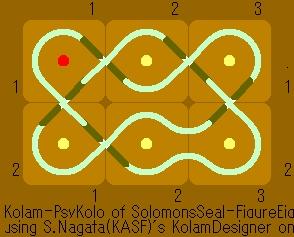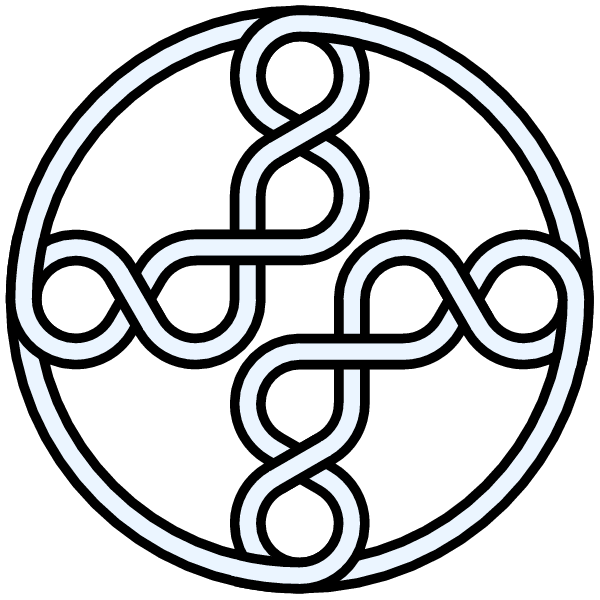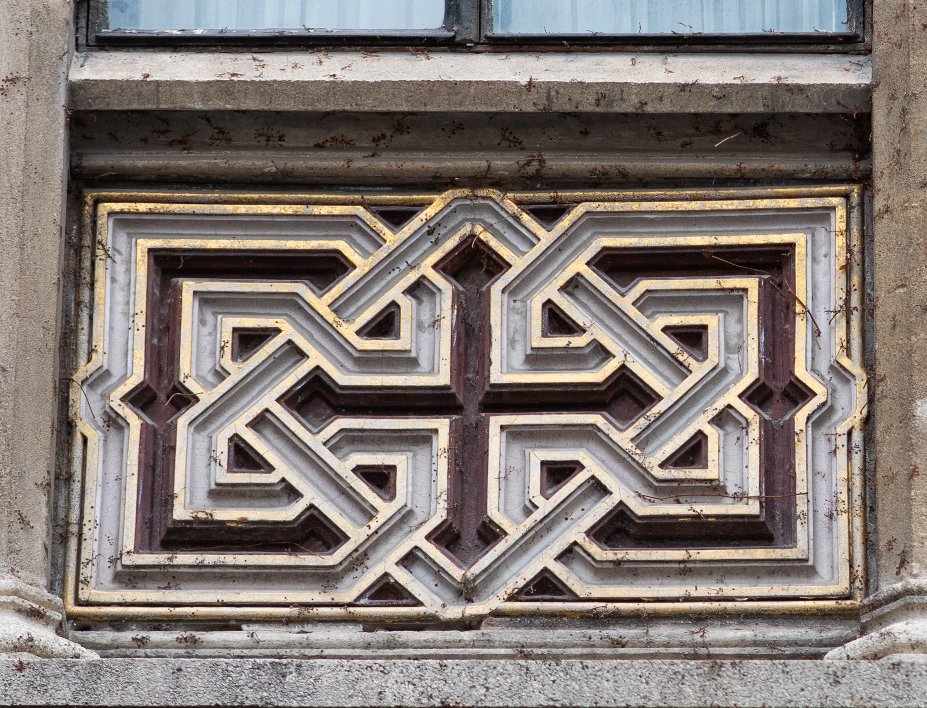T(5,2)
|
[[Image:T(3,2).{{{ext}}}|80px|link=T(3,2)]] |
[[Image:T(7,2).{{{ext}}}|80px|link=T(7,2)]] |

|
Visit T(5,2)'s page at Knotilus!
Visit T(5,2)'s page at the original Knot Atlas! An interlaced pentagram, this is known variously as the "Cinquefoil Knot", after certain herbs and shrubs of the rose family which have 5-lobed leaves and 5-petaled flowers (see e.g. [4]), as the "Pentafoil Knot" (visit Bert Jagers' pentafoil page), as the "Double Overhand Knot", as 5_1, or finally as the torus knot T(5,2). When taken off the post the strangle knot (hitch) of practical knot tying deforms to 5_1 |
 The VISA Interlink Logo [1] |
 Version of the US bicentennial emblem | |
 A pentagonal table by Bob Mackay [2] |
||
 Partial view of US bicentennial logo on a shirt seen in Lisboa [3] | ||
This sentence was last edited by Dror. Sometime later, Scott added this sentence.
Knot presentations
| Planar diagram presentation | X3948 X9,5,10,4 X5,1,6,10 X1726 X7382 |
| Gauss code | {-4, 5, -1, 2, -3, 4, -5, 1, -2, 3} |
| Dowker-Thistlethwaite code | 6 8 10 2 4 |
Polynomial invariants
Vassiliev invariants
| V2 and V3 | {0, 5} |
Khovanov Homology
The coefficients of the monomials are shown, along with their alternating sums (fixed , alternation over ). The squares with yellow highlighting are those on the "critical diagonals", where or , where 4 is the signature of T(5,2). Nonzero entries off the critical diagonals (if any exist) are highlighted in red.
|
0 | 1 | 2 | 3 | 4 | 5 | χ | |||||||||
| 15 | 1 | -1 | ||||||||||||||
| 13 | 0 | |||||||||||||||
| 11 | 1 | 1 | 0 | |||||||||||||
| 9 | 0 | |||||||||||||||
| 7 | 1 | 1 | ||||||||||||||
| 5 | 1 | 1 | ||||||||||||||
| 3 | 1 | 1 |
Computer Talk
Much of the above data can be recomputed by Mathematica using the package KnotTheory`. See A Sample KnotTheory` Session.
Include[ColouredJonesM.mhtml]
In[1]:= |
<< KnotTheory` |
Loading KnotTheory` (version of August 19, 2005, 13:11:25)... | |
In[2]:= | Crossings[TorusKnot[5, 2]] |
Out[2]= | 5 |
In[3]:= | PD[TorusKnot[5, 2]] |
Out[3]= | PD[X[3, 9, 4, 8], X[9, 5, 10, 4], X[5, 1, 6, 10], X[1, 7, 2, 6], X[7, 3, 8, 2]] |
In[4]:= | GaussCode[TorusKnot[5, 2]] |
Out[4]= | GaussCode[-4, 5, -1, 2, -3, 4, -5, 1, -2, 3] |
In[5]:= | BR[TorusKnot[5, 2]] |
Out[5]= | BR[2, {1, 1, 1, 1, 1}] |
In[6]:= | alex = Alexander[TorusKnot[5, 2]][t] |
Out[6]= | -2 1 2 |
In[7]:= | Conway[TorusKnot[5, 2]][z] |
Out[7]= | 2 4 1 + 3 z + z |
In[8]:= | Select[AllKnots[], (alex === Alexander[#][t])&] |
Out[8]= | {Knot[5, 1], Knot[10, 132]} |
In[9]:= | {KnotDet[TorusKnot[5, 2]], KnotSignature[TorusKnot[5, 2]]} |
Out[9]= | {5, 4} |
In[10]:= | J=Jones[TorusKnot[5, 2]][q] |
Out[10]= | 2 4 5 6 7 q + q - q + q - q |
In[11]:= | Select[AllKnots[], (J === Jones[#][q] || (J /. q-> 1/q) === Jones[#][q])&] |
Out[11]= | {Knot[5, 1], Knot[10, 132]} |
In[12]:= | A2Invariant[TorusKnot[5, 2]][q] |
Out[12]= | 6 8 10 12 14 18 20 22 q + q + 2 q + q + q - q - q - q |
In[13]:= | Kauffman[TorusKnot[5, 2]][a, z] |
Out[13]= | 2 2 2 3 3 4 4 |
In[14]:= | {Vassiliev[2][TorusKnot[5, 2]], Vassiliev[3][TorusKnot[5, 2]]} |
Out[14]= | {0, 5} |
In[15]:= | Kh[TorusKnot[5, 2]][q, t] |
Out[15]= | 3 5 7 2 11 3 11 4 15 5 q + q + q t + q t + q t + q t |






















